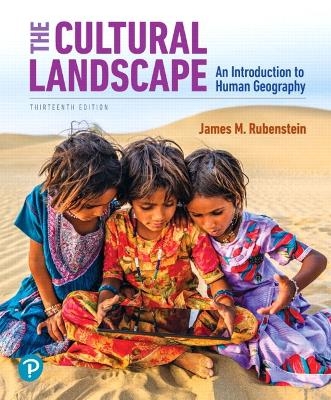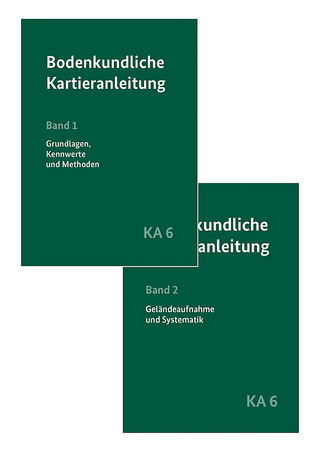
Cultural Landscape, The
Pearson (Verlag)
978-0-13-511615-9 (ISBN)
Global issues, local impacts
Trusted for its timeliness, readability, and structured learning path, the bestselling The Cultural Landscape: An Introduction to Human Geography explores the patterns and processes of Earth’s human landscapes. Rubenstein weaves the themes of globalization and diversity and their relationship throughout the text, addressing these themes with a clear organization and presentation that engages students and appeals to instructors.
The 13th Edition incorporates the latest data and applied examples of human geography, helps students connect global concepts and phenomena to their local geographies, and engages students in active debate around the most critical topics of human geography. Text links integrated into each chapter connect students to MapMaster 2.0 and interactive Data Visualization activities powered by Social Explorer, providing students with hands-on experience using data-driven geospatial technology and the techniques of geographers.
Also available as a Pearson eText or packaged with Mastering Geography
Pearson eText is a simple-to-use, mobile-optimized, personalized reading experience that can be adopted on its own as the main course material. It lets students highlight, take notes, and review key vocabulary all in one place, even when offline. Seamlessly integrated videos and other rich media engage students and give them access to the help they need, when they need it. Educators can easily share their own notes with students so they see the connection between their eText and what they learn in class — motivating them to keep reading, and keep learning.
Mastering combines trusted author content with digital tools and a flexible platform to personalize the learning experience and improve results for each student.Built for, and directly tied to the text, Mastering Geography enables an extension of learning, allowing students a platform to practice, learn, and apply outside of the classroom.
Note: You are purchasing a standalone book; Pearson eText and Mastering Geography do not come packaged with this content. Students, ask your instructor for the correct package ISBN and Course ID. Instructors, contact your Pearson representative for more information.
If your instructor has assigned Pearson eText as your main course material, search for:
• 0135729653 / 9780135729656 Pearson eText The Cultural Landscape: An Introduction to Human Geography, 13/e -- Access Card
OR
• 0135729629 / 9780135729625 Pearson eText The Cultural Landscape: An Introduction to Human Geography, 13/e -- Instant Access
If you would like to purchase both the physical text and Mastering Geography search for:
0135188679 / 9780135188675 The Cultural Landscape: An Introduction to Human Geography Plus Mastering Geography with Pearson eText -- Access Card Package
Package consists of:
0135116155 / 9780135116159 The Cultural Landscape: An Introduction to Human Geography
0135188431 / 9780135188439 Mastering Geography with Pearson eText -- ValuePack Access Card -- for The Cultural Landscape: An Introduction to Human Geography
About our author Dr. James M. Rubenstein received his B.A. from the University of Chicago in 1970, M.Sc. from the London School of Economics and Political Science in 1971, and Ph.D. from Johns Hopkins University in 1975. He is Professor of Geography at Miami University, where he teaches urban and human geography. Dr. Rubenstein also conducts research in the automotive industry and has published three books on the subject: The Changing U.S. Auto Industry: A Geographical Analysis (Routledge); Making and Selling Cars: Innovation and Change in the U.S. Auto Industry (The Johns Hopkins University Press); and Who Really Made Your Car? Restructuring and Geographic Change in the Auto Industry (W.E. Upjohn Institute, with Thomas Klier). Dr. Rubenstein is also the author of Contemporary Human Geography, as well as Introduction to Contemporary Geography. He also writes a weekly column about local food for the Oxford Press. Winston, a lab-husky mix with one brown eye and one blue eye, takes Dr. Rubenstein for long walks in the woods every day. Thanks to Ursula Roma for the photo.
1. This Is Geography
1.1 Why Is Geography a Science?
1.2 Why Is Every Place Unique?
1.3 Why Are Different Places Similar?
1.4 Why Are Some Actions Not Sustainable?
2. Population & Health
2.1 Where Are People Distributed?
2.2 Why is Population Increasing?
2.3 Why Does Health Vary by Region?
2.4 Why Might Population Change in the Future?
3. Migration
3.1 Where Are Migrants Distributed?
3.2 Where Do People Migrate Within Countries?
3.3 Why Do People Migrate?
3.4 Why Do Migrants Face Challenges?
4. Culture & Social Media
4.1 Where Are Culture Groups Distributed?
4.2 Where Are Leisure & Material Culture Distributed?
4.3 Why Is Access to Culture Unequal?
4.4 Why Do Cultures Face Sustainability Challenges?
5. Languages
5.1 Where Are Languages Distributed?
5.2 Why Do Languages Diffuse?
5.3 Why Do Languages Vary Among Places?
5.4 Why Do Languages Survive or Perish?
6. Religions
6.1 Where Are Religions Distributed?
6.2 Why Do Religions Have Distinctive Distributions?
6.3 Why Do Religions Organize Space in Specific Patterns?
6.4 Why Do Territorial Conflicts Arise Among Religious Groups?
7. Ethnicities
7.1 Where Are Ethnicities Distributed?
7.2 Why Do Ethnicities Have Distinctive Distributions?
7.3 Why Might Ethnicities Face Conflicts?
7.4 Why Do Ethnic Cleansing & Genocide Occur?
8. Political Geography
8.1 Where Are States Distributed?
8.2 Why Are States Challenging to Create?
8.3 Why Do States Face Threats?
8.4 Why Do States Have Distinctive Geographic Structure?
9. Food & Agriculture
9.1 Why Do People Consume Different Foods?
9.2 Where Did Agriculture Originate?
9.3 Where Is Agriculture Distributed?
9.4 Why Do Farmers Face Sustainability Challenges?
10. Development
10.1 Why Does Development Vary Among Countries?
10.2 Where Are Inequalities in Development Distributed?
10.3 Why Do Countries Face Development Challenges?
10.4 Why Are Countries Able to Make Progress in Development?
11. Industry & Energy
11.1 Where Is Industry Distributed?
11.2 Why Do Industries Face Energy Challenges?
11.3 Why Do Industries Face Pollution Challenges?
11.4 Why Are Industries Changing Locations?
12. Services & Settlements
12.1 Where Are Services Distributed?
12.2 Where Are Consumer Services Distributed?
12.3 Where Are Business Services Distributed?
12.4 Why Do Services Cluster in Settlements?
13. Urban Patterns
13.1 Why Are Cities Challenging to Define?
13.2 Where Are People Distributed in Urban Areas?
13.3 Why Do Urban Areas Expand?
13.4 Why Might Cities Be More Sustainable?
Summary & Review
Afterword: Careers in Geography
Appendix: Map Scale and Projections
Glossary
Credits
Map Index
| Erscheinungsdatum | 15.01.2019 |
|---|---|
| Sprache | englisch |
| Maße | 236 x 285 mm |
| Gewicht | 1544 g |
| Themenwelt | Naturwissenschaften ► Geowissenschaften ► Geografie / Kartografie |
| Sozialwissenschaften ► Soziologie ► Makrosoziologie | |
| ISBN-10 | 0-13-511615-5 / 0135116155 |
| ISBN-13 | 978-0-13-511615-9 / 9780135116159 |
| Zustand | Neuware |
| Haben Sie eine Frage zum Produkt? |
aus dem Bereich


